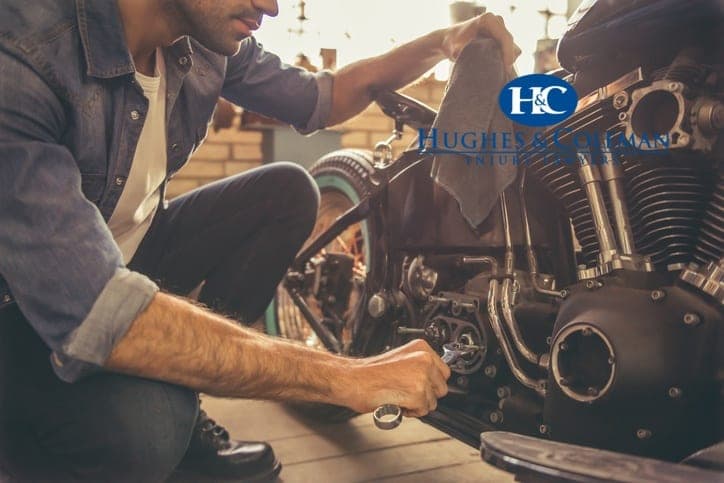-

As spring settles in across the country, motorcycles riders are dusting off their machines and hitting the road. We present some practical advice to make each motorcycle ride as safe as possible.
This is the first of two articles about motorcycle accidents and safety issues. You can read the second one here.
Even though spring seems to be taking its time this year to arrive, sunnier, warmer, and longer days will be upon Kentucky and Tennessee in no time. No more snow or sleet on the road, higher temperatures, and less rain will inevitably produce more traffic. Sadly, more traffic usually means more accidents and driving conditions in the early spring often turn out to be treacherous. In addition, both daylight savings time and spring break holiday season are notorious culprits of a sharp jump in traffic fatalities seen starting late in March.
One group seems to be at particular risk of sustaining dangerous injuries or even death. According to the National Highway Traffic Safety Administration (NHTSA), fatal accidents among motorcyclists occur 27 times more frequently than fatalities in other vehicles. In 2015, this translated into a total of 4,976 people killed and an estimated 88,000 injured in crashes throughout the United States. What, then, makes motorcycle riders more prone to injuries or death on the road?
A motorcycle has some distinct advantages over a passenger vehicle as a mode of transportation. It is smaller and more maneuverable than a car which makes it a perfect choice if you want to beat the traffic during a morning commute. In crowded cities, it’s easier to find a parking spot for a motorcycle. A two-wheeler is usually more fuel-efficient and economical than a passenger car. Yet, many of the features that may make some consider trading their car for a motorcycle are also the ones that make a motorcycle inherently more dangerous. A smaller, fast-moving vehicle is harder to spot in busy traffic; and while the body of a car offers a measure of protection to the driver, the design of a motorcycle leaves the rider vulnerable to all sorts of external impacts and, as a consequence, injuries.
Still, a motorcycle ride can be fun, safe, and injury-free. In this week’s blog and the next one, we will present some helpful advice on how to make sure your ride is safe for you and the motorists you share the road with.
Be Sure Your Motorcycle is Road-Ready
After being stored away for the whole winter season, a motorcycle will need some attention before it is in road-ready condition.. Take tires, for example. Former NHTSA administrator David Strickland warned in a special memo on tire safety released a couple of years ago: “Underinflated tires spinning on hot asphalt for extended periods of time can be a recipe for disaster.” The same memo mentioned that “over the five-year period from 2005 to 2009, nearly 3,400 people died, and an estimated 116,000 were injured, in tire-related crashes”. Before you hit the road on your motorcycle this season, be sure to check your tire pressure and add some air if needed. Here are other routine checks you should perform before taking your bike out after winter storage:
- Fluids – check oil levels and brake fluids.
- Mirrors, windshields, and lights – clean all glass surfaces and check if all lights function correctly.
- Gas – at the end of the season, it is advisable to drain the gas tank because any residual gasoline could clog the system. Fill up the gas tank at the beginning of a new season.
If you’ve been injured due to no fault of your own, contact an experienced motorcycle accident lawyer today for a free consultation.
Get In Touch Today!
We offer free consultations 24/7 and there will always be someone here to take your call. Call our personal injury lawyers today for a free consultation or fill out this form and we will contact you.
We serve clients across Tennessee and Kentucky and we have several offices throughout both states. See all of our locations and contact us today.


